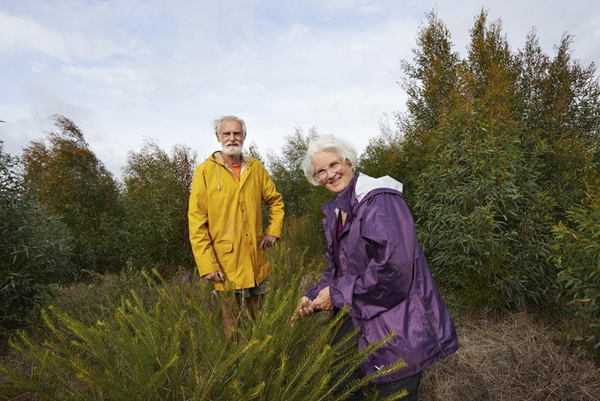
The wonderful Bill and Jane Thompson have also just featured in a great story in the Albany Advertiser which notes that Carbon Neutral Fund executive director Ray Wilson said “the Thompsons and Albany planting contractor Justin Jonson [Threshold Environmental] had created the Fund’s most successful carbon farming project in Australia, in terms of the number of plant species.”
Here is the full story from https://au.news.yahoo.com/thewest/regional/great-southern/a/31843408/future-face-of-farming-in-great-southern/
When Queensland couple Bill and Jane Thompson moved to a property in an area recognised internationally as a biodiversity hotspot chasing a tree change, they ended up with more than 800,000 of them.
Mr and Mrs Thompson’s Yarraweyah Falls property, between Stirling Range and Fitzgerald River national parks, is situated along one of Australia’s largest conservation projects, the Gondwana Link, which aims to connect 1000km of bush between Margaret River and the Nullarbor .
Almost three years after the first seeds were sown as part of the Thompsons’ bid to restore 100ha of unproductive farmland to native vegetation, their tireless efforts are evident.
As well as providing crucial habitat for native animals, their restoration project helps reduce Australia’s greenhouse gas emissions through carbon sequestration.
About 180,000 plants will provide an estimated 26,500 tonnes of carbon over the next 30-40 years, which can be bought as carbon offsets by businesses and households through not-for-profit organisation Carbon Neutral Charitable Fund.
Fund executive director Ray Wilson said the Thompsons and Albany planting contractor Justin Jonson had created the fund’s most successful carbon farming project in Australia, in terms of the number of plant species.
Mr Thompson said they were set to exceed 300 plant species this year, and had more than 800,000 individual trees and shrubs.
“We have identified over 600 species in our bush (section), so it’s a very diverse area we are trying to replicate in the revegetation site,” he said.
Seedlings propagated by the Thompsons on site and at two nurseries are planted by hand, while other seed hand collected by the couple is direct seeded.
Mrs Thompson also documents a specimen of each plant species with a photograph and illustration in their herbarium.
Mr Thompson said it had been a steep learning curve but rewarding work.
“It’s amazing the way things grow out here,” he said.
“You can feel like you’re in the desert, but everything has been growing like crazy.
“It’s looking really good.”
Mr Thompson said challenges included replanting areas that had been unsuccessful, battling prolific weeds and emus trampling seedlings.
The Thompsons, who are in their 70s, have also installed 30 bird perches and 25 nesting boxes to attract wildlife to the property.
Mr Thompson said the highlight of the experience so far was seeing firsthand what could be achieved in a relatively short timeframe.
“When you think it is all getting too much, you go and have a look and think ‘it is looking pretty good — there is hope for the planet yet,” he said.



 Media stories and publications
Media stories and publications